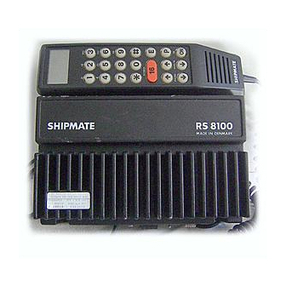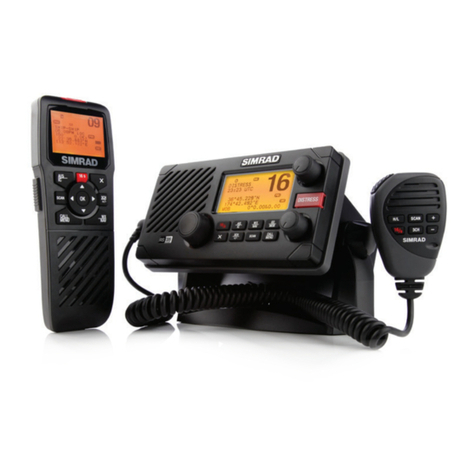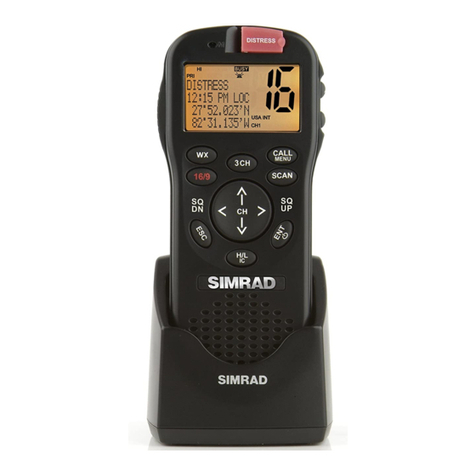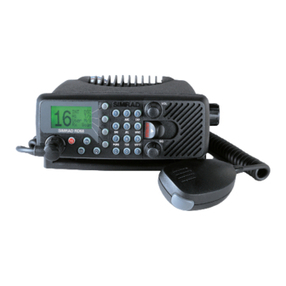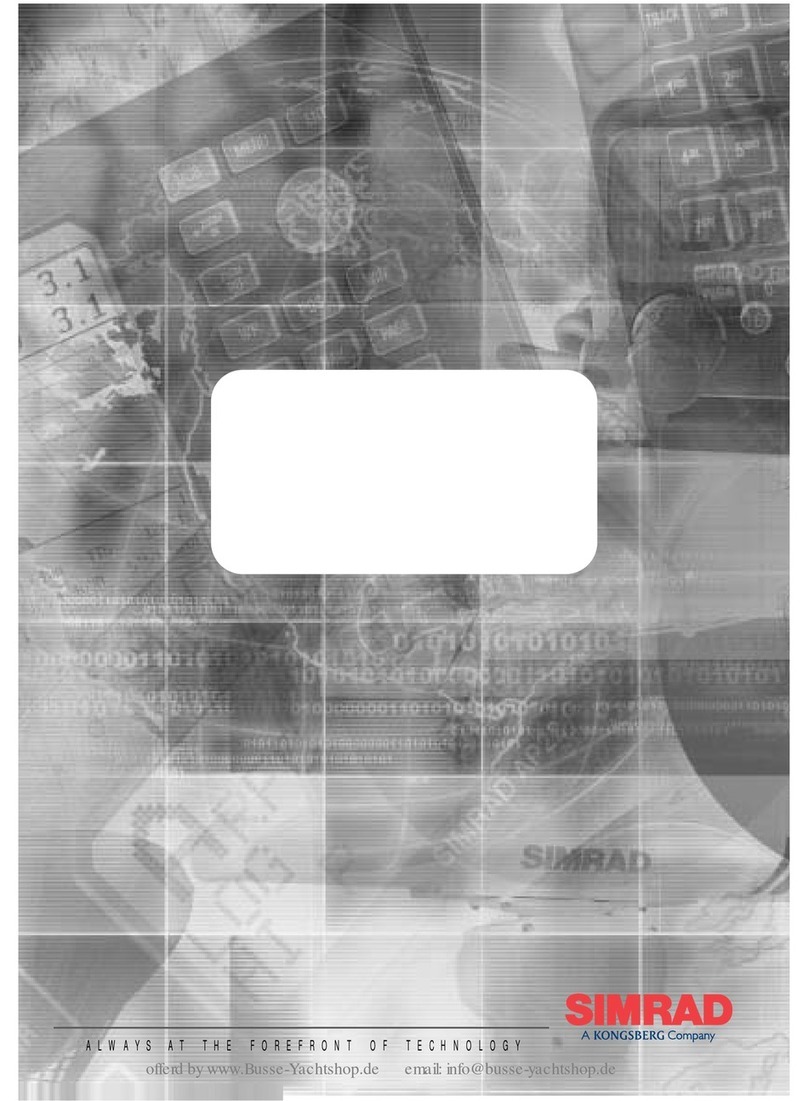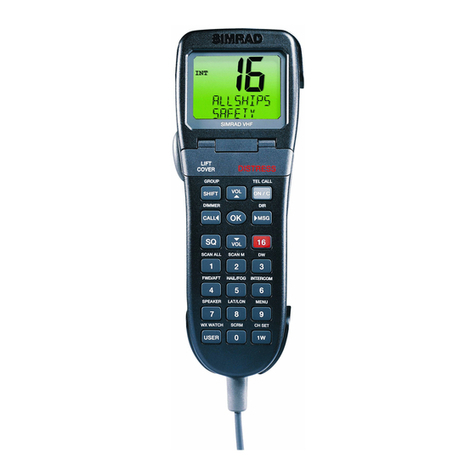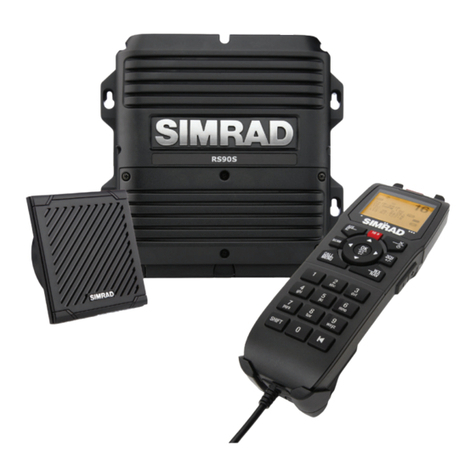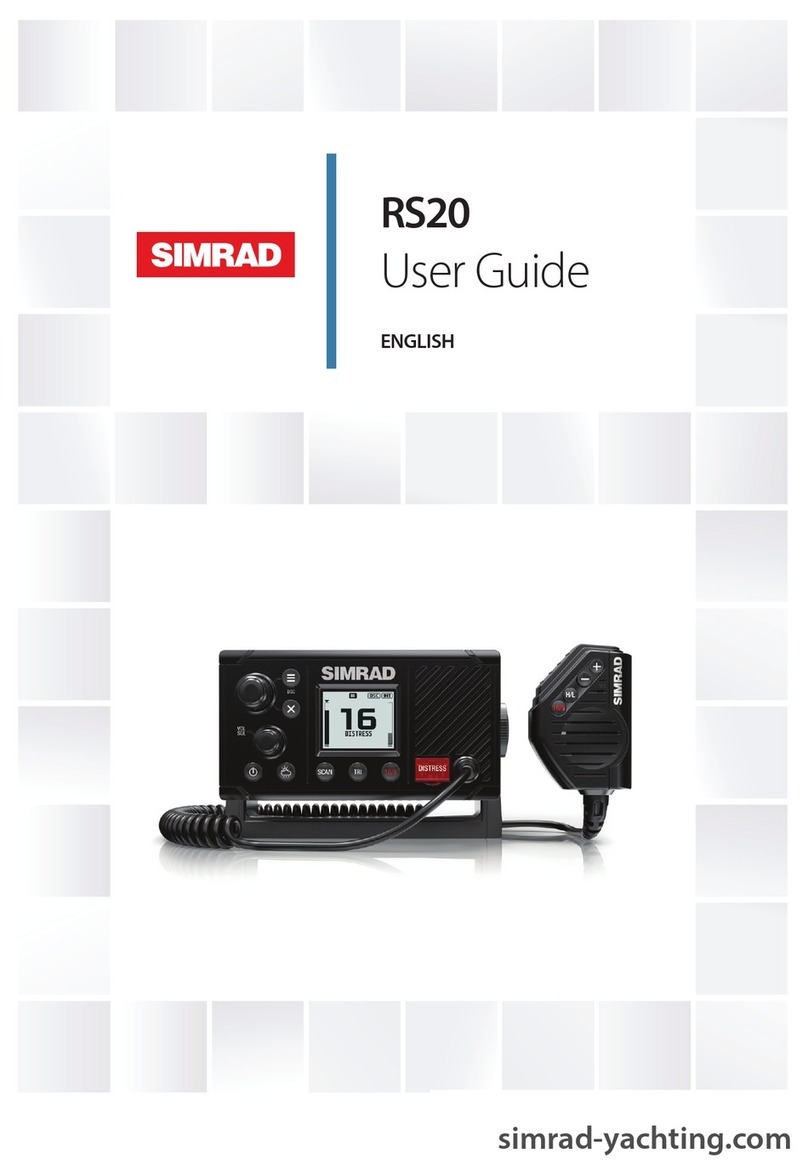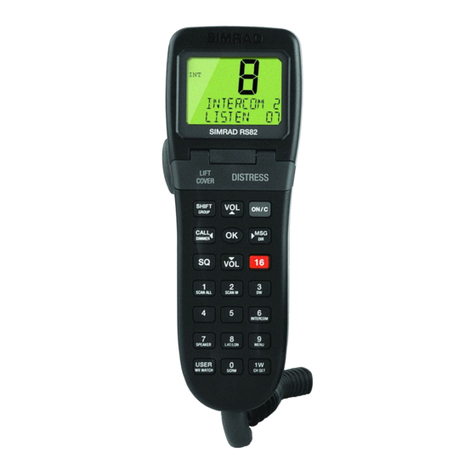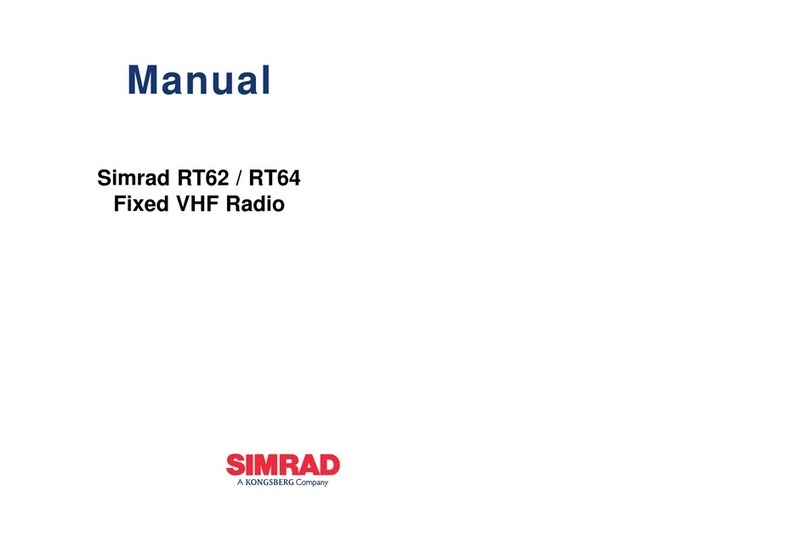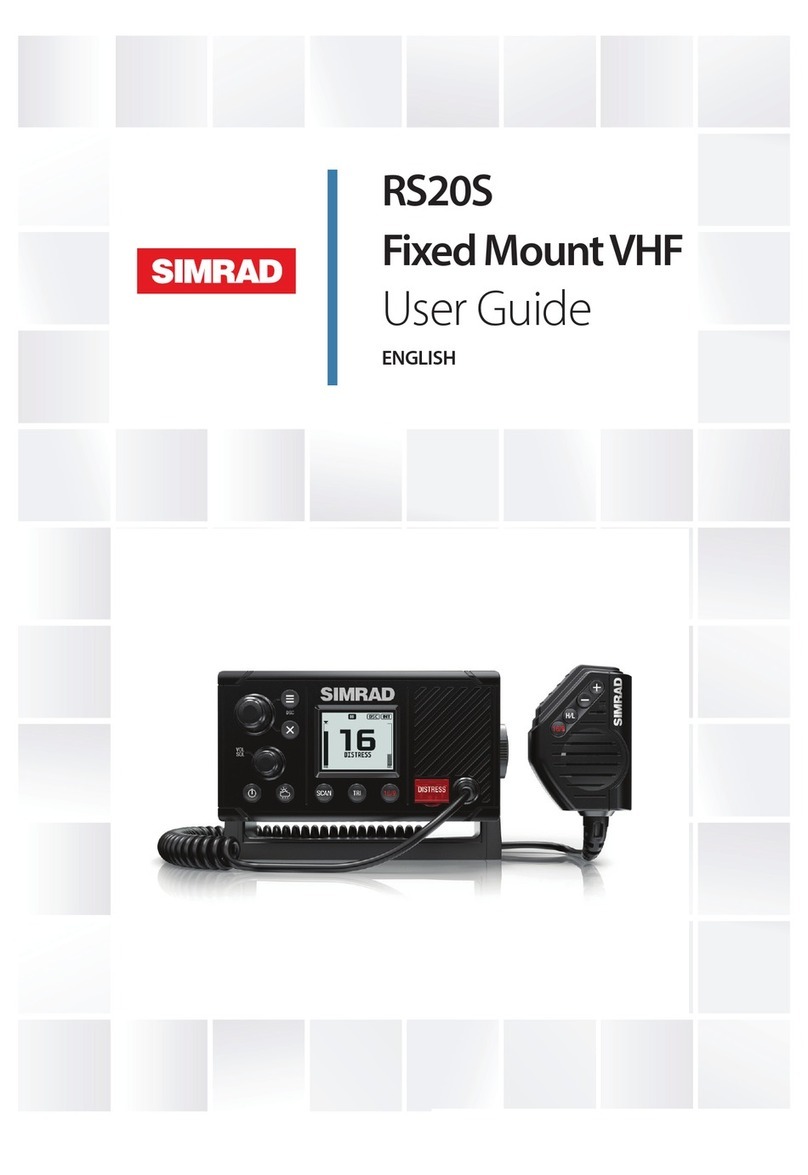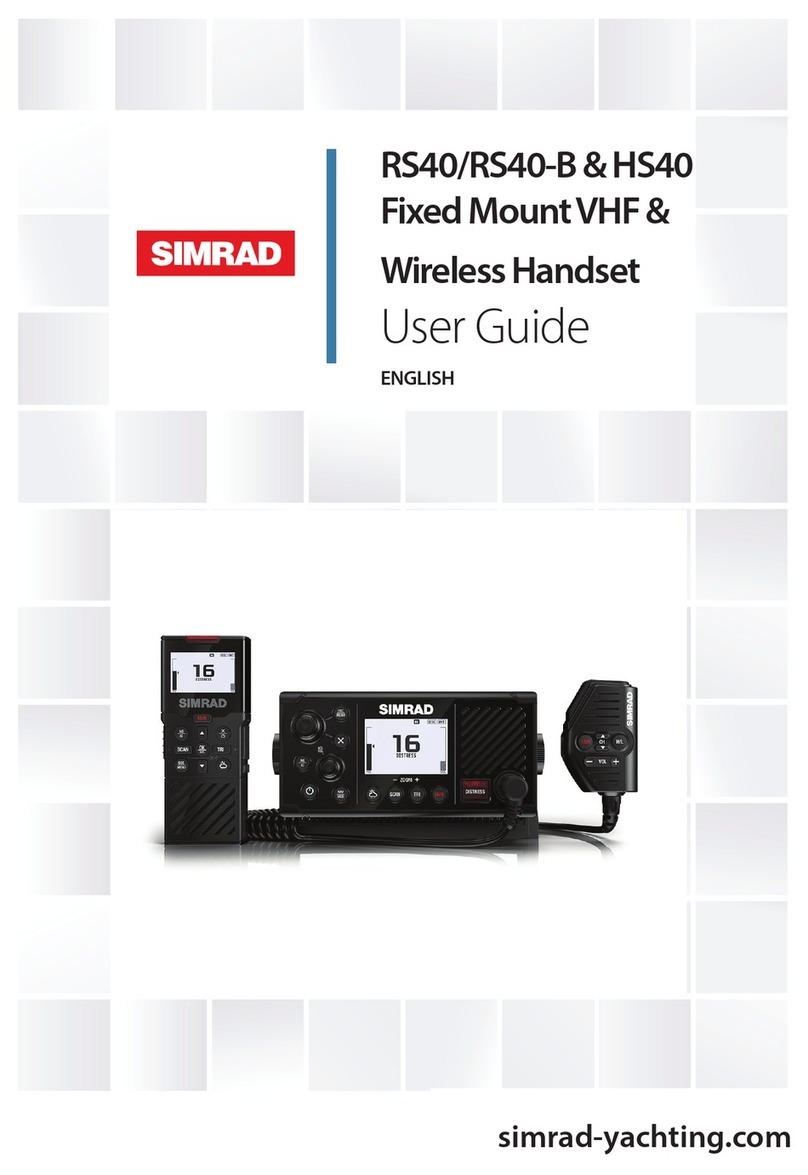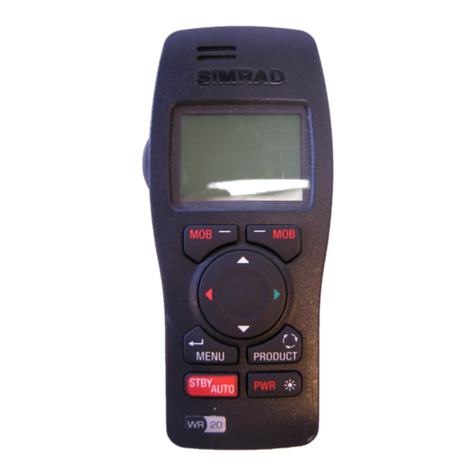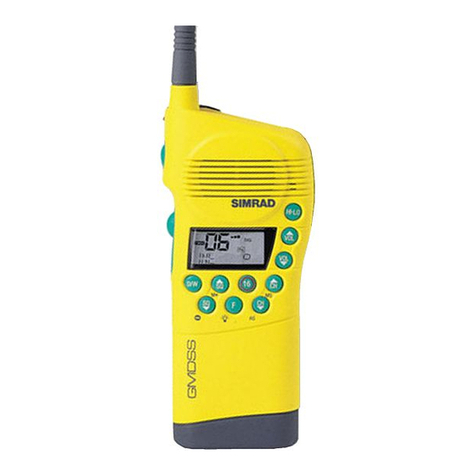Page 9Page 8
2.4 Removing and Attaching Battery
There are two battery options for each model.
These are not interchangeable between the
two models - use only the specified batteries :
HT50
NC07 700mAh NiCad Battery
NH12 1200mAh NiMH Battery
Axis 50 GMDSS
NC08 850mAh NiCad Battery
LTB3 Lithium Battery (Non rechargeable)
To remove the battery, lift the two locking clips
holding the battery pack in place (Fig 2.4).
When attaching the battery pack, ensure the
two locating pegs on the top of the battery are
located into the slots in the radio and that the
two locking clips have both engaged.
The set is fully waterproof even with the battery
removed, but it is recommended that any mois-
ture on the top of the battery or in the battery
compartment is wiped clear before attaching to
prevent the water creating a conductive path
between the contacts and reducing battery life.
2.5 Charger Options
The HT50 is supplied as standard with a 12v
drop in trickle charger TC50 that will accept the
whole radio, or the battery alone (Fig 2.5). This
charger will run from a standard 12v marine
supply (12.6v - 15.5v), or from 110/220/240v
mains with an appropriate optional
adaptor/power supply. Charging with the
trickle charger takes approximately 12-16
hours. There is also a rapid charger available
(RC50) which will charge the battery within 11/2
hours.
2.6 Charging of Batteries
To charge the NiCad and NiMH battery packs,
insert the battery or radio into the charger
ensuring that excess moisture is wiped clear
from the contacts on the back of the battery
pack. The TC50 will trickle charge the battery
to full capacity. The RC50 will rapid charge the
battery until it is fully charged and will then
automatically switch to maintenance charge.
Fig 2.4 - Battery pack removal
Fig 2.5 - Battery charger
2.7 Notes on Charging
• NiCad batteries are supplied uncharged and
need charging before use.
• Charge the battery up to full charge when not
in use, although it may lose some of its charge
after several months of storage.
• Do not charge at temperatures below 0ºC or
above 40ºC.
• Turn off if charging battery while fitted to the
radio.
• Always try to fully discharge the battery
before recharging - repeated recharging of the
battery while it is partly discharged may create
a ‘memory effect’, preventing the battery reach-
ing full charge.
• Dispose of used batteries carefully. The con-
tents of the batteries could be harmful to the
environment.
• Never expose to a naked flame.
• IMPORTANT : The Lithium battery pack
(available only with the Axis 50 GMDSS
model) are not rechargeable, and under no
circumstances should any attempt be made
to recharge these batteries. Replacement
lithium cells can be re-ordered from your
local Simrad Agent, quoting part No. LTB3.
2.8 Battery Level Indicator
Except when adjusting the Volume or Squelch,
the bar graph on the display shows the battery
charge level (Fig 2.7). This indicates the volt-
age at the battery terminals, not necessarily the
charge stored. Ten or nine bars indicate a fully
charged battery, three or four bars mean the
battery is almost drained.
• When using a lithium battery pack, the low
level battery indicator may flash under trans-
mit conditions. This does not necessarily
reflect the charge level remaining in the battery,
as it is due to the different voltage characteris-
tics of a Lithium battery pack under load.
Replacement and spare batteries are available
from your local Simrad Agent. Please quote
the relevant part number. Fig 2.7 - Battery level indicator
Fig 2.6 - Charging Options
12v DC
AC
Mains

